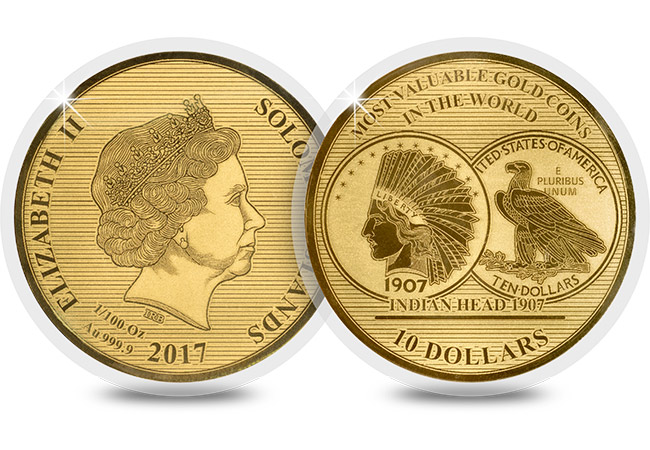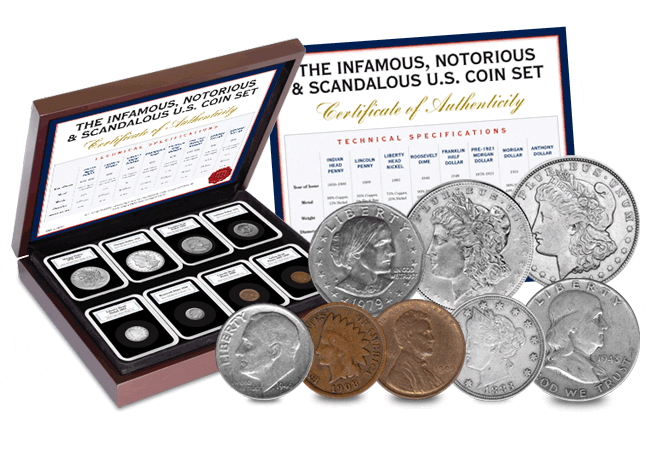American coins
The million dollar coin that caused ‘public outrage’…
Since 1795, the 10-dollar Gold coins in circulation in the United States have been referred to as “Eagles”. These coins were legal tender until their withdrawal in 1933. However, there is one Eagle in particular that has become a numismatic legend.
A presidential intervention
You see, the obverse of the Eagle had long bore the goddess of freedom (Liberty), however in 1907, President Theodore Roosevelt complained to the Secretary of Treasury that US coinage lacked artistic merit.
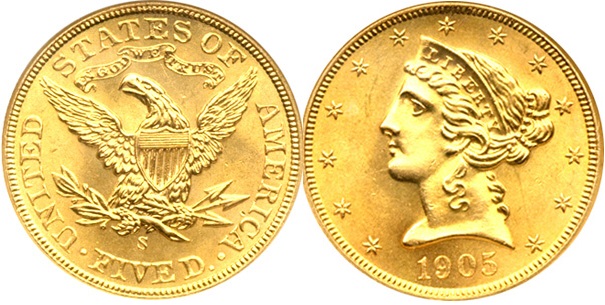
1905 Eagle Coin
As a result, Roosevelt personally commissioned New York City sculptor Augustus Saint-Gaudens to re-design this Gold coin; however, it was certainly not without incident!
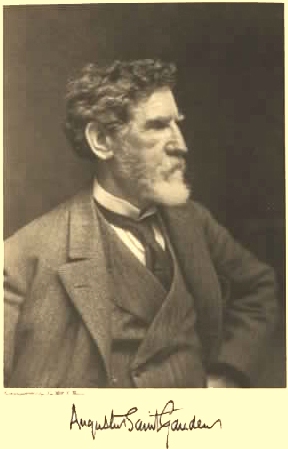
Augustus Saint Gaudens
Firstly, as the coin was designed by a sculptor, rather than a professional engraver, there were a number of issues in production, particularly due to the high relief. As a result, several versions of the coin had to be minted before achieving a sample appropriate for full production and release into circulation.

1907 Indian Head Coin
Secondly, Roosevelt felt strongly that a Native American war bonnet should be included in the design as a “picturesque” and “distinctly American” symbol. So, under President Roosevelt’s instruction, Gaudens retained the Liberty profile on the obverse, simply placing a feather headdress on her head. Later, the coin would receive criticism for this absurd addition, with one art historian declaring that it missed out on being “a great coin” due to the President’s interference.
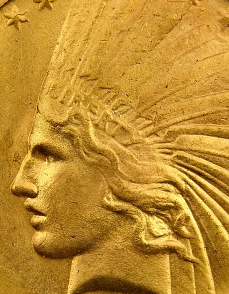
Lady Liberty with Native American War Bonnet
Finally, further issues arose when the motto “In God we Trust” was replaced by “E PLURIBUS UNUM”, which translates to mean “Out of Many, One”. In fact, such was the public outrage, Congress passed a bill mandating its inclusion on any further coins. Mint Chief Engraver Charles E. Barber added the words and made minor modifications to the 1908 design.
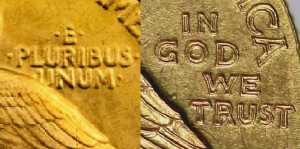
The coins changing mottos
A numismatic legend!
However, as is often the case, the flaws in the original 1907 Indian Head Eagle have made it one of the most desirable coins in the world.
In January 2011, what is probably the best-known example of an Indian Head Eagle, one of only 50 originally minted coins in the rare proof finish, was sent to auction – It sold for an incredible $2,185,000!
If you’re interested…
Today you can own one of the most valuable coin designs in the world…
This pure gold coin weighing just 1/100oz is an affordable way of owning one of the most valuable coin designs in the world – the 1907 USA Indian Head.
Click here to secure yours today >>
America’s most infamous coins
Every coin tells a story. But few more than America’s eight most notorious coins…
Right now the U.S. collectible coin market is an absolute minefield. It is the most competitive coin collecting market in the world. In fact, every one of the top ten most valuable coins of all time is from the U.S.
Some of these coins date back to the 1800’s and all of them are extremely famous. Let me tell you why…

The Indian Penny – featuring a not-so-Native-American!
Indian Head Penny (1859-1909)
The Indian Head Penny is famous for celebrating Native Americans, but it actually doesn’t show a Native American.
According to legend, designer James B. Longacre used a portrait of his 12 year old daughter, Sarah, wearing a headdress. It is, however, more likely that the portrait was based on a classical Greco-Roman statue Venus Accroupie (Crouching Venus).
Either way, the ‘Indian’ is not a Native American! The obverse features the head of Lady Liberty wearing a headdress, while the reverse depicts a wreath as well as the words ‘One Cent’ and a shield in the middle at the top of the coin.
Morgan Silver Dollar (1878-1921)

The design inspired by a school teacher…
For the new silver dollar, designer George T. Morgan decided to portray Liberty as a goddess, inspired by Philadelphian school teacher, Anna Williams who had a fair complexion, Grecian nose and golden hair. Morgan eventually persuaded Anna Williams to sit as the model for Liberty for the obverse of the Morgan Silver Dollar.
In 1878 artists’ models were considered immoral, therefore, Morgan publicly stated that the model was a statue in a Philadelphia museum. Word soon leaked out, however, and it is rumoured that Williams was fired from her teaching job!
‘No Cents’ Liberty Head Nickel (1883)
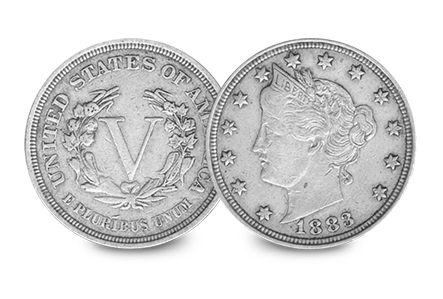
The coin that created an opportunity for crooks
When the new Liberty Head Nickel was issued in 1883, the denomination was nowhere to be seen, instead a large ‘V’ (Roman ‘5’) was on the reverse.
The coins were the size of the $5 gold coin in circulation at the time which created an opportunity for unscrupulous crooks who came up with a cunning plan to pass them off as $5 by gold plating the new nickels and cutting reeds into the edge by hand. The U.S Mint soon became aware and within a few weeks the design was changed to include the word ‘Cents’ under the ‘V’. The ‘No Cents’ coins are also known as ‘Racketeer’ Nickels.
Lincoln Penny (1909)

The first coin to feature Lincoln’s famous motto
Designer Victor David Brenner added his ‘VDB’ initials to the new Lincoln Penny design in 1909 which was issued to commemorate the 100th anniversary of Abraham Lincoln’s birth.
While the public generally loved the Lincoln cent when it was first released, they didn’t like the prominence of Brenner’s initials. The U.S. Mint quickly removed the initials as it appeared as though Brenner was either boasting or advertising. This was the first cent to feature Abraham Lincoln’s motto ‘In God we trust’ on the obverse.
Morgan Dollar (1921)
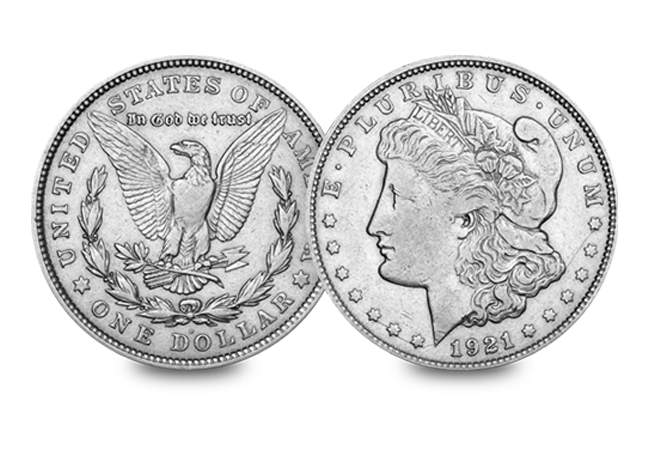
Forever associated with the notorious criminal couple Bonnie & Clyde
When notorious outlaws Bonnie and Clyde were shot and killed by police in 1934, a 1921 Silver Morgan Dollar was recovered from the jacket of Clyde Barrow among other possessions. The outlaw lovers were believed to have committed 13 robberies among other felonies between 1932 and 1934.
The hunt for the duo captured the nation’s imagination during the Great Depression and their fame was heightened by their practice of leaving glamourous photos of themselves at crime scenes.
Even more so now, the 1921 coin is forever associated with Bonnie and Clyde.
Roosevelt Dime (1946)

The stolen design…
In 1945 plans were quickly laid for the introduction of a new coin to honour Roosevelt after his passing. The task was assigned to John Ray Sinnock and coinage began in 1946. Controversy soon arose because sculptor Selma Burke claimed that Sinnock had stolen her design without giving her credit, however Sinnock strongly denied this.
In addition, conspiracy theorists claimed that Sinnock’s initials ‘JS’ (at the base of Roosevelt’s neck) actually referred to Russian leader Joseph Stalin because of Roosevelt’s supposed ‘communist’ learnings.
Franklin Half Dollar (1948)
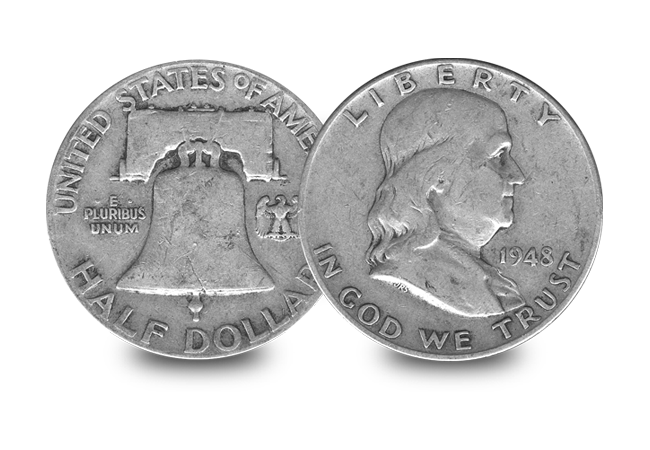
The coin that made a statment
The Franklin Half Dollar was designed by John R. Sinnock and his ‘JS’ initials were again seen by conspiracy theorists as a tribute to Joseph Stalin.
In addition, the crack on the Liberty Bell was controversial, some people saw it as a statement that Liberty in the United States was under threat (despite the fact that the image exactly reflects the bell’s appearance).
Finally, what appears to be a small ‘o’ and large ‘F’ on the reverse (‘oF’ in the United States of America) was rumoured to be a mistake and that the Mint would recall all 1948 coins to correct the ‘error’.
Anthony Dollar (1979)
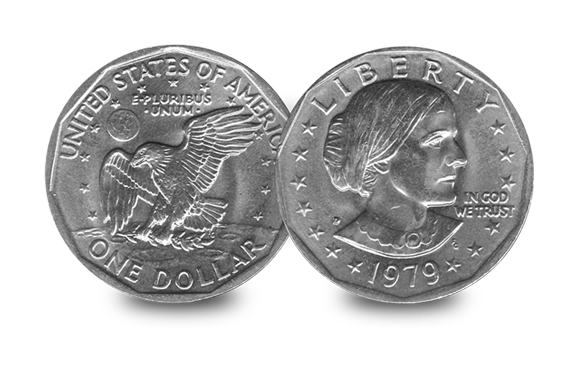
The Dollar that the public refused to use
The Anthony Dollar was revolutionary – the first circulating coin to feature a historical woman. Susan B. Anthony was an author and protest speaker among other titles but best known as President of the National American Suffrage Association. The coin was also the first small-sized Dollar that was issued for wide circulation.
However, it quickly became notorious – and almost universally rejected – because it was the same colour and about the same size as a quarter. Therefore, it was often mistaken for a Quarter, and the public refused to use it! (Interestingly, it is now a sought-after collector’s item.)
You can own all eight of these coins in ‘The Infamous, Notorious and Scandalous U.S. Coin Set’.
The talk of the 2015 World’s Fair of Money…
At this year’s American Numismatic Association World Money Fair in Chicago there is one coin everyone is talking about – the world’s first maple leaf-shaped coin.
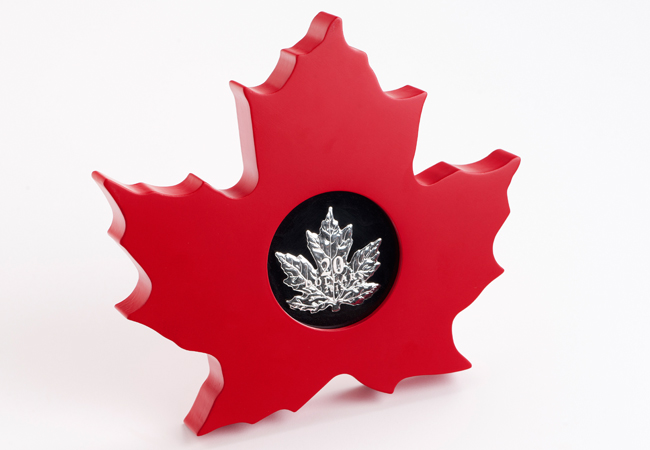
The Cut-Out Silver Maple Leaf coin is already 92% sold worldwide
Struck by The Royal Canadian Mint for Modern Numismatics International, this impressive Fine Silver $20 Coin is shaped like Canada’s iconic maple leaf and has such intricate engraving you can even see the veins in the leaf itself.
The Canadian Mint are known for their innovation and this is new release is no exception.
But it doesn’t stop there. They have even created a bespoke red maple leaf-shaped box complete with viewing window to add to the coins appeal.
Perhaps unsurprisingly this coin is set to be one of the fastest selling issues of 2015, with the Mint selling out of their allocation in 2 days.
The show ends on Saturday but this is certainly a coin that will be sought-after by collectors for many months to come.
The Westminster Collection has secured a limited stock of these stunning coins and you can add one to your collection today.
But you’ll have to be quick, it’s unlikely this opportunity will come up again.

